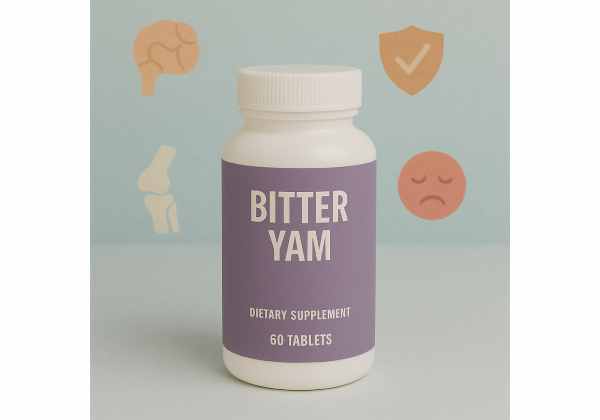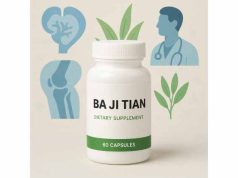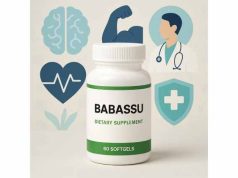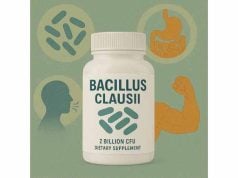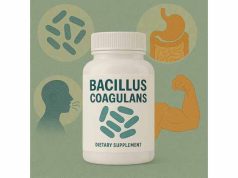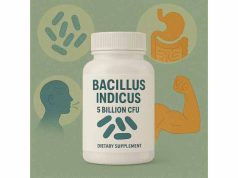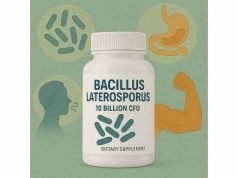Bitter yam, known botanically as Dioscorea dumetorum, is a tuberous root native to Africa and Southeast Asia, prized for both its unique nutritional value and its remarkable potential as a natural supplement. Unlike sweet yams, bitter yam has a characteristic bitterness and contains compounds that have been studied for their effects on blood sugar, digestion, and even cognitive health. In traditional medicine, bitter yam is used for managing diabetes, boosting energy, supporting the immune system, and as a food staple during times of scarcity. With increasing interest in plant-based remedies and functional foods, bitter yam is gaining recognition among wellness enthusiasts and researchers alike. This guide will help you discover everything you need to know about its benefits, uses, dosage, and safety.
Key Takeaways
- Bitter yam is valued for its potential to support healthy blood sugar, digestion, and energy levels.
- It contains unique bioactive compounds that may offer antioxidant, anti-inflammatory, and anti-diabetic effects.
- Traditionally used as a food and medicine in Africa and Asia, bitter yam is now explored in modern supplements.
- Safe preparation is essential, as raw bitter yam contains compounds that must be removed before consumption.
- Always consult a healthcare provider before starting bitter yam supplements, especially if you have chronic health conditions.
Table of Contents
- Bitter Yam: Nature, History, and What Makes It Unique
- Bitter Yam’s Biological Properties and How It Works in the Body
- Core Benefits and Uses of Bitter Yam Supplements
- Safety Considerations, Side Effects, and Interactions of Bitter Yam
- Bitter Yam Dosage, Administration, and Best Practices
- Frequently Asked Questions About Bitter Yam
Bitter Yam: Nature, History, and What Makes It Unique
Bitter yam (Dioscorea dumetorum) stands out among root vegetables for its strong flavor, high nutritional content, and its significant role in African and Asian cultures. Often confused with other yams or sweet potatoes, bitter yam is distinguished by its distinct taste and its complex composition of nutrients and bioactive phytochemicals.
What Is Bitter Yam?
Bitter yam is a perennial climbing plant with thick, tuberous roots that can grow several kilograms in weight. The tubers have a brown, rough outer skin and a white to pale yellow interior. Unlike the commonly consumed sweet yams, bitter yam contains naturally occurring compounds called dioscorine and other alkaloids that contribute to its sharp, sometimes unpalatable flavor. In the wild, it is often harvested from forest edges or cultivated in home gardens across West and Central Africa, as well as some parts of Southeast Asia.
Traditional Uses and Cultural Importance
Throughout history, bitter yam has played an essential role as both a food and a medicine:
- Staple Food Source: In many rural African communities, bitter yam provides a critical food source during the “hungry season” or periods of famine, when other crops are scarce. Once properly prepared to remove toxins, the yam is boiled, pounded, or used in porridges.
- Traditional Medicine: Bitter yam has been used for centuries to address various health concerns, including diabetes, gastrointestinal complaints, and fatigue. Some traditional healers use it for supporting blood sugar balance, enhancing fertility, and as a tonic for overall health.
- Spiritual Significance: In certain regions, the yam features in local rituals and festivals, representing life, sustenance, and renewal.
Botanical Features
Bitter yam plants have heart-shaped leaves and twining stems that can climb several meters. The tubers are highly variable in size and shape, sometimes appearing round, oval, or irregularly lobed. The plant’s resilience to drought and pests makes it a reliable crop in challenging environments.
Nutritional Value
Bitter yam tubers are rich in:
- Complex carbohydrates: Providing slow-digesting energy.
- Dietary fiber: Supporting digestive health and regularity.
- Vitamins and minerals: Particularly potassium, manganese, vitamin C, and some B vitamins.
- Phytochemicals: Including saponins, alkaloids, and phenolic compounds, many of which have antioxidant activity.
It is important to note that, in its raw form, bitter yam contains antinutritional factors and potentially toxic substances like dioscorine. Safe preparation methods—including thorough washing, soaking, and cooking—are necessary to make the tubers safe for consumption.
Global Perspectives and Modern Interest
While still most popular in Africa and select Asian countries, bitter yam is now catching the attention of health-conscious consumers and researchers worldwide. It’s being investigated as a functional food for diabetes management, as a plant-based source of nutrition, and as a potential supplement for metabolic and cognitive support.
How Does Bitter Yam Differ From Other Yams?
- Bitter yam vs. sweet yam: Bitter yam is less sweet, has a firmer texture, and contains unique bioactive compounds.
- Bitter yam vs. wild yam (Dioscorea villosa): Wild yam is most often used in Western herbal medicine for women’s health; bitter yam is mainly consumed as food and for blood sugar support.
By understanding the origins, cultural value, and nutritional profile of bitter yam, you can better appreciate its unique place in both traditional diets and modern supplement use.
Bitter Yam’s Biological Properties and How It Works in the Body
Bitter yam is more than just a calorie-rich root; it’s a complex plant with an impressive range of biological actions that set it apart as a functional food and supplement. The health effects of bitter yam stem from a unique combination of macronutrients, vitamins, minerals, and potent phytochemicals.
Key Bioactive Compounds in Bitter Yam
- Dioscorine: An alkaloid found almost exclusively in bitter yam, known for its neuroactive and antidiabetic effects. At high levels, dioscorine is toxic; however, safe preparation removes most of it.
- Saponins: Plant compounds with cholesterol-lowering, immune-modulating, and anti-inflammatory actions.
- Phenolic acids and flavonoids: Antioxidants that help protect cells from oxidative stress and may lower inflammation.
- Fiber: Both soluble and insoluble, supporting digestive health and glycemic control.
How Does Bitter Yam Work in the Body?
- Blood Sugar Management:
Research indicates that bitter yam’s fiber, saponins, and certain phenolics may slow carbohydrate digestion, reducing blood sugar spikes after meals. Dioscorine and related compounds may also help enhance insulin sensitivity or act on metabolic pathways that promote glucose balance. - Antioxidant Activity:
The tubers are rich in plant-based antioxidants, such as phenolic acids, which neutralize free radicals and support cellular repair. This may reduce long-term risks of chronic diseases linked to oxidative stress, such as heart disease and neurodegeneration. - Neuroprotective Effects:
Animal and cell studies suggest that dioscorine, in controlled amounts, could have neuroprotective properties. This means it might help shield brain cells from damage, potentially benefiting memory and learning. - Anti-Inflammatory Action:
Bitter yam’s saponins and other phytochemicals can dampen inflammation, which is linked to improved immune response, joint health, and overall well-being. - Digestive Benefits:
The high fiber content promotes healthy gut motility, prevents constipation, and may foster the growth of beneficial gut bacteria. - Energy and Satiety:
As a complex carbohydrate, bitter yam provides a steady energy supply, helping you feel fuller for longer and reducing unhealthy cravings.
Traditional Mechanisms and Folk Wisdom
Traditional healers recognize bitter yam as both a restorative and cleansing food. Some attribute its blood sugar-balancing effect to a “cooling” energy in traditional African and Asian medicine, believed to help regulate metabolic fire.
Modern Research and Evolving Understanding
Studies on bitter yam are still emerging but increasingly promising. Researchers are exploring its role in metabolic syndrome, diabetes prevention, cognitive aging, and even as a potential ingredient in gluten-free or high-fiber diets.
How Is Bitter Yam Processed for Safety and Potency?
Proper processing—usually involving peeling, soaking, boiling, and discarding the cooking water—is crucial. This removes most of the bitter alkaloids and toxins, making the yam safe to eat or use as a supplement. In capsule or extract form, manufacturers standardize active compounds and test for safety, but reputable sourcing is essential.
Summary of Bitter Yam’s Biological Actions
- Supports blood sugar and metabolic health
- Delivers antioxidants for cell protection
- May enhance cognitive and nervous system function
- Fights inflammation and supports immune resilience
- Promotes digestive health and steady energy
Understanding these mechanisms provides the scientific context for the traditional and modern uses of bitter yam, helping you decide if it fits your personal wellness goals.
Core Benefits and Uses of Bitter Yam Supplements
The rich nutritional and phytochemical profile of bitter yam makes it a multi-purpose supplement, especially valued in holistic and functional wellness routines. Here, we highlight the key, evidence-based benefits and the top reasons people seek out bitter yam.
1. Blood Sugar Regulation and Diabetes Support
Perhaps the most celebrated benefit of bitter yam is its potential to support healthy blood sugar levels:
- Traditional medicine: Healers have long prescribed bitter yam for diabetes and metabolic imbalances.
- Modern research: Animal and preliminary human studies show reduced blood sugar spikes after meals, improved insulin sensitivity, and decreased risk of developing diabetes in at-risk populations.
- How it works: Fiber, saponins, and specific alkaloids slow digestion and help maintain glucose balance.
2. Antioxidant Defense and Cellular Health
Bitter yam is loaded with phenolic compounds and flavonoids:
- Neutralizes free radicals: These plant antioxidants help fight oxidative stress—a root cause of cellular aging, inflammation, and chronic disease.
- Supports organ health: By protecting cells, bitter yam may promote healthy liver, kidney, and cardiovascular function.
3. Neuroprotective and Cognitive Benefits
Early research suggests that controlled, processed bitter yam may support brain health:
- Potential memory enhancement: Dioscorine and other phytochemicals could boost neurotransmitter function and protect neurons from damage.
- Traditional brain tonic: Used by some cultures to support learning and mental clarity.
4. Digestive Wellness and Satiety
Bitter yam’s dietary fiber aids gut health in several ways:
- Prebiotic effects: Supports beneficial bacteria in the colon, which can improve digestion and immunity.
- Regularity: Helps prevent constipation and irregularity.
- Fullness: Sustained energy and greater satiety may assist with healthy weight management.
5. Energy, Endurance, and Immune Support
As a food source:
- Long-lasting energy: Complex carbs provide fuel for physical activity and daily living.
- Micronutrient boost: Minerals like potassium and manganese help support metabolism and immune resilience.
6. Women’s Health and Fertility (Traditional Uses)
Some traditional healers use bitter yam to support menstrual health and fertility, though robust scientific evidence is still limited. Consult a specialist for guidance.
7. Chronic Disease Prevention
Due to its ability to lower inflammation, regulate blood sugar, and provide antioxidants, bitter yam may play a role in preventing metabolic syndrome, heart disease, and neurodegenerative conditions, though more clinical research is needed.
Popular Ways to Use Bitter Yam
- Whole food: After proper preparation, as boiled or mashed tuber.
- Flour: Used in gluten-free baking, porridges, or pancakes.
- Capsule/tablet: For convenient supplementation, with standardized dosages.
- Extract/powder: Blended into smoothies or shakes.
Who Should Consider Bitter Yam Supplements?
- Those with prediabetes or mild blood sugar concerns (with medical supervision)
- Individuals seeking antioxidant or digestive support
- Athletes or those needing sustained, natural energy
- People interested in holistic wellness or traditional plant remedies
Limitations and Realistic Expectations
While bitter yam offers real benefits, it is not a stand-alone cure for diabetes, major diseases, or cognitive decline. Results are best when combined with a balanced diet, exercise, and regular medical care.
Safety Considerations, Side Effects, and Interactions of Bitter Yam
Despite its history as both food and medicine, bitter yam requires a careful approach to ensure safe consumption and supplementation. Its unique chemical makeup brings benefits—but also some risks if improperly handled. Let’s explore the safety profile, potential side effects, and known interactions you should be aware of before including bitter yam in your routine.
Raw Bitter Yam: Toxicity and Proper Preparation
Raw bitter yam contains higher levels of compounds called alkaloids, particularly dioscorine and dihydrodioscorine. These substances can be toxic, causing symptoms like nausea, vomiting, abdominal pain, dizziness, and—at higher doses—more severe neurotoxic effects. Traditional wisdom and scientific studies agree: bitter yam must never be eaten raw.
- Detoxification Methods:
Safe consumption involves multiple preparation steps: peeling, soaking (often overnight in water), thorough boiling, and discarding the cooking water. In some cultures, repeated boiling is recommended. This process removes most of the bitter and potentially harmful components. - Supplement Manufacturing:
High-quality supplements (capsules, powders, extracts) should use only fully processed, detoxified yam. Only purchase products from reputable brands that guarantee safety and quality testing.
Common Side Effects of Bitter Yam
For most healthy adults, properly prepared bitter yam is well tolerated. Still, some users may notice:
- Digestive upset: Gas, bloating, or mild abdominal discomfort—usually when starting with large amounts or with insufficient preparation.
- Allergic reactions: Rare, but possible in individuals sensitive to yams or related plants. Symptoms can include rash, itching, or swelling.
- Changes in urine color or odor: Some users report this after eating large amounts, which is harmless and temporary.
Serious Side Effects and Overdose
Improperly prepared bitter yam (containing residual toxins) may cause:
- Severe stomach pain, vomiting, diarrhea
- Neurological symptoms: Dizziness, confusion, tremors, or, in extreme cases, convulsions
- Difficulty breathing or rapid heartbeat
Seek immediate medical attention if you suspect yam poisoning—especially in children, older adults, or anyone with a weakened immune system.
Drug Interactions and Health Conditions
While research is ongoing, the following groups should use extra caution:
- People with kidney or liver disease: Bitter yam’s compounds may be harder to metabolize and excrete. Consult a healthcare provider before use.
- Individuals with allergies to Dioscorea species: Avoid bitter yam altogether.
- Diabetics on medication: Because bitter yam may lower blood sugar, using it alongside anti-diabetic drugs could cause hypoglycemia (low blood sugar). Regular monitoring and medical guidance are essential.
- Pregnant or breastfeeding women: There is not enough safety data, so use is not recommended unless under direct professional supervision.
- Children: Bitter yam supplements are not advised for children due to the risk of toxicity from improper processing.
Possible Interactions with Medications
- Antidiabetic drugs: May have additive effects on lowering blood glucose.
- Diuretics: The potassium content of yams may impact electrolyte balance if used with certain diuretics.
- Hormone-sensitive medications: Some research on wild yam (a relative) suggests possible hormonal activity. While this is less clear for bitter yam, those on hormone therapies should use caution and seek professional advice.
Safe Use Guidelines
- Only consume thoroughly prepared bitter yam—never raw.
- Purchase supplements from reputable brands that provide detoxification and quality assurance.
- Start with a small amount to assess your body’s tolerance.
- Monitor for any adverse reactions and discontinue use if symptoms develop.
- Consult your healthcare provider, especially if you take prescription medications or have a chronic health condition.
Summary Safety Table
| Risk Factor | Recommendation | Notes |
|---|---|---|
| Raw or poorly processed yam | Never consume | Toxic alkaloids can cause serious harm |
| Healthy adults (processed yam) | Generally safe | Start with small amounts |
| Allergic to yams | Avoid | Risk of allergic reaction |
| Diabetes/medications | Use with caution | Monitor blood sugar closely |
| Pregnant/breastfeeding/children | Not recommended | Insufficient safety data |
| Kidney/liver impairment | Medical supervision required | May affect toxin clearance |
By following these guidelines, bitter yam can be a valuable and safe part of your nutrition or supplement plan.
Bitter Yam Dosage, Administration, and Best Practices
Using bitter yam safely and effectively depends on proper dosage, preparation, and consistent habits. Whether you’re consuming bitter yam as a traditional food or as a supplement, following evidence-based guidelines maximizes its benefits and minimizes risks.
Traditional Food Preparation Dosage
- Fresh tuber (food):
After peeling, soaking, and boiling to detoxify, a standard serving is about 100–150 grams of cooked tuber (roughly half to three-quarters of a cup) per meal. In traditional diets, it’s eaten one to three times weekly, not daily. - Porridge/flour:
Boiled, detoxified bitter yam is sometimes pounded into a flour and used in breads, porridges, or pancakes. Serving sizes vary, but typically match the cooked tuber equivalent.
Supplement Form Dosage
- Capsules/tablets:
Look for standardized extracts with dosage instructions from a reputable manufacturer. Typical safe doses are 300–600 mg of processed bitter yam extract daily, divided into one or two servings. - Powder:
Start with ½ teaspoon (about 2–3 grams) of detoxified powder per day, mixed into smoothies, water, or food, increasing only if no adverse effects occur.
How and When to Take Bitter Yam
- Best taken with meals to improve digestion and reduce any chance of stomach upset.
- Hydrate well—fiber and saponins may cause mild dryness or bloating if not enough water is consumed.
- Cycle use: Some traditional practices recommend using bitter yam for several weeks, then taking a break, especially if you use it as a supplement.
Combining Bitter Yam with Other Foods or Supplements
- Pair with healthy fats: May aid absorption of fat-soluble vitamins in the yam.
- Avoid combining with other bitter or alkaloid-rich supplements unless advised by a practitioner, to reduce cumulative risk of side effects.
- Monitor carbohydrate intake: If using for blood sugar management, combine with a balanced diet and healthy lifestyle changes.
Signs You Should Lower Dose or Stop
- Persistent nausea, stomach pain, or diarrhea
- Rash, itching, or swelling
- Dizziness or neurological symptoms
- Unusual changes in urine color (if not related to food dyes)
If any of these develop, discontinue use and seek professional advice.
Selecting a High-Quality Bitter Yam Supplement
- Choose brands with third-party testing and clear labeling of origin, processing, and active compounds.
- Look for evidence of detoxification procedures on the label or in company documentation.
- Avoid “proprietary blends” that do not disclose bitter yam content per dose.
Practical Tips for Consistent Benefits
- Prepare food yams safely, never eat raw, and always discard cooking water.
- Take supplements at the same time each day for best results.
- Track your energy, digestion, and blood sugar if you have health concerns.
- Store both tubers and supplements in a cool, dry place.
When to Seek Professional Guidance
- If you are pregnant, breastfeeding, under 18, or managing chronic health conditions
- If you experience any persistent or severe symptoms
By respecting these best practices, bitter yam can be a safe, nutrient-dense addition to your diet or wellness routine.
Frequently Asked Questions About Bitter Yam
What is bitter yam used for in traditional medicine?
Bitter yam is commonly used for supporting blood sugar control, digestion, and energy. Traditional healers use it for diabetes management, immune support, and sometimes for fertility and women’s health.
Is bitter yam safe to eat or use as a supplement?
Yes, but only after thorough preparation to remove toxic alkaloids. Never eat raw bitter yam. Supplements from reputable brands are typically processed for safety.
Can bitter yam help with diabetes or blood sugar management?
Research and traditional use suggest bitter yam may help balance blood sugar and support insulin sensitivity. Always use under medical supervision if you have diabetes or take medication.
Are there side effects from bitter yam supplements?
Properly processed bitter yam is generally safe but may cause mild digestive upset or, rarely, allergic reactions. Improperly prepared yam can cause severe toxicity.
How much bitter yam should I take daily?
For supplements, typical doses are 300–600 mg per day. For food, one serving (100–150 grams cooked) several times per week is common. Always follow product instructions and start with a low dose.
Who should not use bitter yam?
Pregnant or breastfeeding women, children, people with kidney or liver disease, and those allergic to yams should avoid bitter yam unless advised by a healthcare provider.
Can I combine bitter yam with other supplements or medications?
Caution is advised if you take antidiabetic drugs or diuretics. Monitor blood sugar, and consult a healthcare provider to avoid interactions.
Disclaimer:
This article is for educational purposes only and does not substitute for professional medical advice. Always consult a qualified healthcare provider before starting any supplement, especially if you have a medical condition, take prescription medication, or are pregnant or breastfeeding. Individual results and reactions can vary.
If you found this article helpful, please consider sharing it on Facebook, X (formerly Twitter), or your preferred social platform. Your support allows us to continue creating expert-backed content for the wellness community. Follow us for more insights and thank you for helping us spread knowledge!

